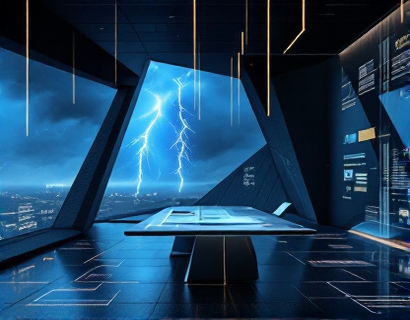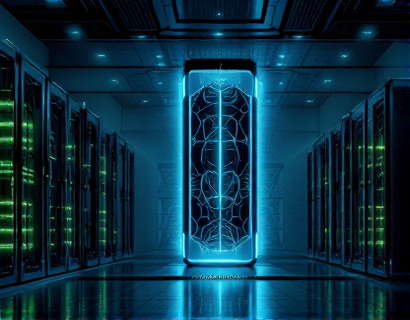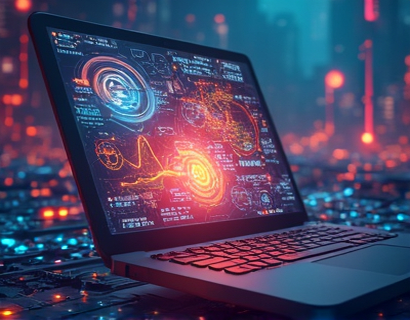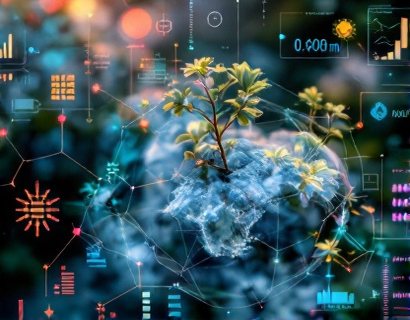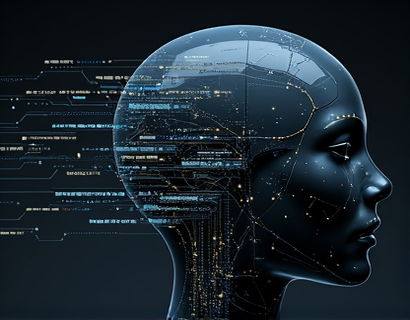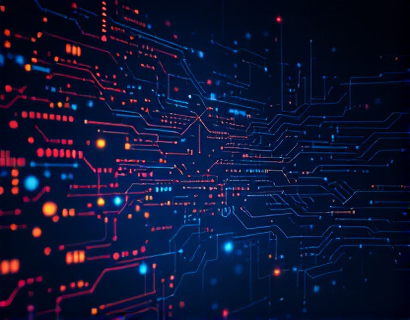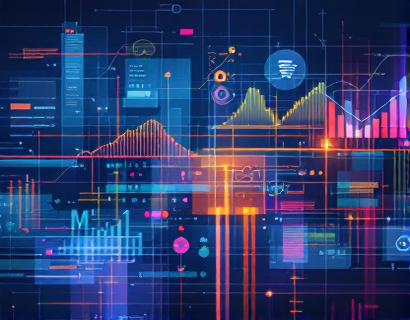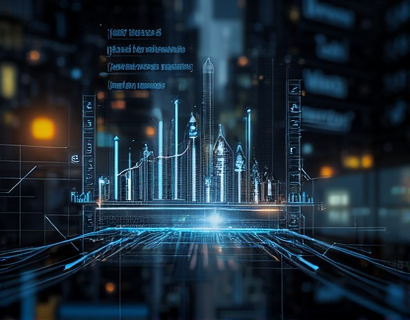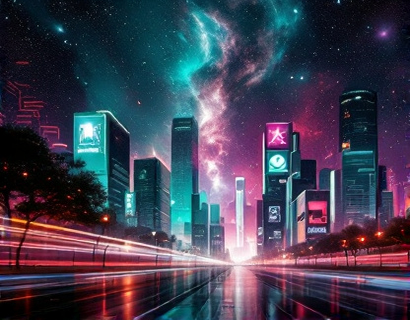Unlocking the Future: Innovative NFT Solutions for Digital Creators and Collectors in the Evolving Ucosystem
The digital landscape is undergoing a profound transformation, driven by the emergence of Non-Fungible Tokens (NFTs) as a revolutionary medium for creating, trading, and owning unique digital assets. This shift is not merely a technological advancement but a paradigm change that is redefining digital scarcity, ownership, and community engagement. For digital creators and collectors, this evolution presents unprecedented opportunities to monetize their work, connect with like-minded individuals, and explore new dimensions of creativity and innovation.
The concept of NFTs has gained significant traction, particularly among artists, musicians, and content creators who seek to authenticate and monetize their digital creations. Unlike traditional digital files that can be easily replicated, NFTs provide a unique identifier and proof of ownership, ensuring that each digital asset is one-of-a-kind. This intrinsic value has opened up new avenues for digital artists to sell their work directly to collectors, bypassing traditional intermediaries and retaining greater control over their creations.
However, the NFT space is still in its nascent stages, and there is a pressing need for platforms that cater specifically to the needs of digital creators and collectors. These platforms must offer intuitive tools for crafting and managing NFTs, foster a vibrant community, and provide robust solutions for trading and showcasing digital assets. The following discussion delves into the key features and benefits of such platforms, highlighting how they can revolutionize the digital experience for all stakeholders involved.
Empowering Creators: Tools for Crafting Unique Digital Assets
One of the primary challenges faced by digital creators is the technical complexity involved in producing and managing NFTs. A cutting-edge NFT platform should address this by providing user-friendly tools that simplify the creation process. These tools should include drag-and-drop interfaces, pre-built templates, and integrated design software that cater to both novice and experienced creators.
For instance, the platform could offer a visual editor that allows artists to create custom digital art directly within the interface. This editor could support various formats, including 2D and 3D models, animations, and audio files, ensuring that creators have the flexibility to experiment with different media. Additionally, the platform could integrate with popular design tools, enabling seamless import and export of assets, thus streamlining the workflow.
Another crucial feature is the ability to embed metadata and provenance directly into the NFT. This metadata can include information about the creator, the creation date, and any relevant context or story behind the asset. By embedding this data, creators can provide a richer experience for collectors, enhancing the value and appeal of their work. The platform should also support smart contracts to automate royalty payments, ensuring that creators continue to benefit from secondary sales of their NFTs.
Fostering a Dynamic Community: Engaging Collectors and Creators
A successful NFT platform must go beyond being a mere transactional marketplace; it should foster a vibrant community where creators and collectors can interact, collaborate, and grow together. This community aspect is vital for driving engagement, fostering innovation, and building a loyal user base.
To achieve this, the platform could incorporate social features such as profiles, forums, and chat rooms. Creators can share their work-in-progress, seek feedback, and connect with potential buyers. Collectors, on the other hand, can join groups based on their interests, participate in discussions, and stay updated on the latest trends and releases. These social interactions not only enhance the user experience but also help in building a supportive and collaborative ecosystem.
Auctions and marketplaces are another essential component of the community. The platform can host regular virtual auctions where creators can list their NFTs for bidding. These auctions can be designed to be transparent and fair, with clear rules and secure transaction processes. Additionally, the platform can introduce a reputation system that rewards active and positive community members, further encouraging engagement and good behavior.
Revolutionizing Digital Scarcity and Ownership
One of the most compelling aspects of NFTs is their ability to create and manage digital scarcity. In the traditional digital world, copies of files can be made infinitely, diminishing the value of digital assets. NFTs change this paradigm by assigning unique identifiers to each digital asset, ensuring that only one person can own a particular NFT at any given time. This uniqueness adds a layer of value and exclusivity that is highly appealing to collectors.
The platform should provide robust tools for creators to set and manage the scarcity of their NFTs. This includes options to limit the total number of tokens that can be minted, create different tiers of scarcity, and even offer exclusive content or experiences to owners of rare or limited-edition NFTs. By doing so, creators can create a sense of urgency and desirability around their work, driving higher engagement and sales.
Furthermore, the platform can introduce features that enhance the ownership experience. For example, digital wallets integrated into the platform can provide a secure and convenient way for users to store, manage, and transfer their NFTs. These wallets can support multiple blockchain networks, ensuring compatibility and accessibility for a global user base. The platform can also offer educational resources and best practices for managing digital assets, helping users navigate the complexities of NFT ownership.
Enhancing the Trading Experience
For collectors, the ability to buy, sell, and trade NFTs seamlessly is a key factor in choosing an NFT platform. A well-designed trading interface is essential to ensure a smooth and secure user experience. The platform should support various trading mechanisms, including direct peer-to-peer transactions, auctions, and marketplaces with fixed prices.
To enhance trust and security, the platform must implement robust verification processes for users and transactions. This can include KYC (Know Your Customer) protocols, transaction history tracking, and fraud detection systems. By ensuring a secure environment, the platform can attract more users and build a reputation for reliability.
Another important aspect is the integration of analytics and insights tools. Collectors can benefit from data-driven insights that help them make informed decisions about their investments. The platform can provide statistics on market trends, price movements, and collector behavior, enabling users to strategize and optimize their collections. Additionally, the platform can offer personalized recommendations based on the user's preferences and past activities, further enhancing the trading experience.
Innovative Features for a Future-Ready Ecosystem
To stay ahead of the curve, the NFT platform should incorporate innovative features that address emerging trends and user needs. One such feature is the integration of virtual reality (VR) and augmented reality (AR) experiences. By allowing creators to embed VR or AR elements into their NFTs, the platform can offer immersive and interactive experiences that go beyond traditional digital assets.
For example, a digital artist could create an NFT that, when viewed through a VR headset, transforms into a 3D art installation. This not only enhances the visual appeal of the NFT but also opens up new possibilities for exhibition and display. Similarly, AR features can bring digital assets to life in the real world, allowing collectors to interact with their NFTs in unique and engaging ways.
Another forward-looking feature is the incorporation of decentralized finance (DeFi) elements. By integrating DeFi protocols, the platform can enable users to lend, borrow, and yield farm their NFTs, providing new revenue streams and financial opportunities. This can be particularly attractive to collectors who are looking to maximize the utility and value of their assets.
Lastly, the platform should prioritize sustainability and environmental responsibility. The use of proof-of-stake (PoS) consensus mechanisms and other eco-friendly blockchain solutions can significantly reduce the carbon footprint associated with NFT transactions. By adopting sustainable practices, the platform can appeal to a growing number of environmentally conscious users and contribute to a more responsible digital ecosystem.
Conclusion
The future of digital assets is bright, and innovative NFT solutions have the potential to transform the way creators and collectors interact, create, and own digital content. By providing intuitive tools for crafting unique digital assets, fostering a dynamic community, enhancing digital scarcity and ownership, and revolutionizing the trading experience, these platforms can unlock new possibilities for digital creators and collectors alike.
As the NFT space continues to evolve, it is crucial for platforms to stay adaptable and responsive to user needs. By embracing cutting-edge technology and user-centric design, these platforms can not only meet the current demands but also shape the future of the digital universe. For those passionate about the intersection of creativity, innovation, and digital ownership, joining such a platform is not just an opportunity but a necessity in the ever-changing landscape of the Ucosystem.




